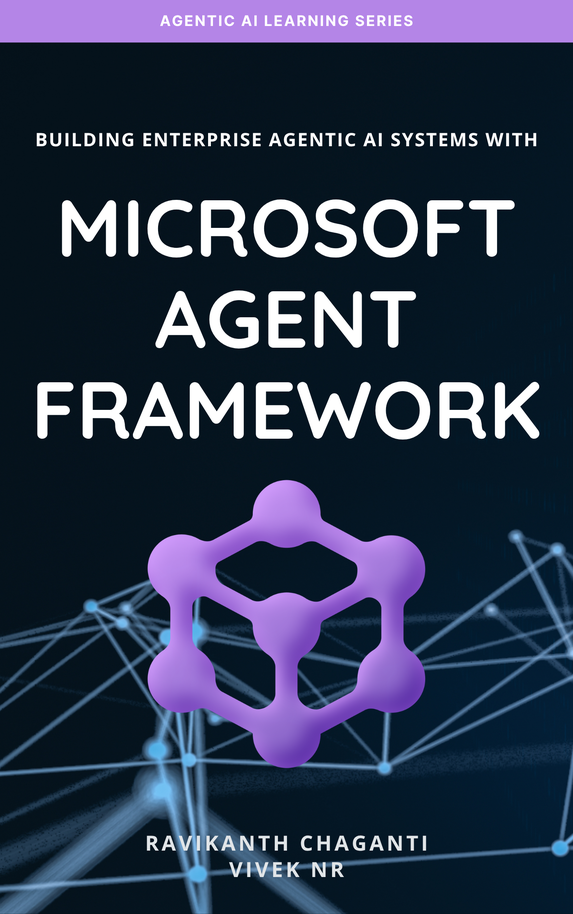
Building Enterprise Agentic AI Systems with Microsoft Agent Framework
Publisher: Leanpub
Co-authors: Vivekanandh N R
If you're exploring agentic AI systems with Microsoft Agent Framework, this book is your hands-on guide to mastering not only the basics but also some seriously cool integrations with other frameworks. You'll get a solid grounding in what makes an AI agent tick and how agentic AI takes things to the next level by letting multiple agents communicate and work together. You'll break away from the idea of a single, isolated agent and discover how a whole network of agents—each responsible for a piece of the puzzle—can be coordinated using asynchronous messaging. Think of it like going from a solo act to a full-blown band where every member plays their part in harmony. The heart of the book is the AutoGen framework. You'll learn how its core handles state management, communication protocols, and agent orchestration. With neat code examples, you'll see how to set up and debug individual agents and even build multi-agent systems that are robust enough for real-world challenges. The AgentChat abstraction is another star of the show—it simplifies how your agents chat with one another, making complex interactions much more manageable. But here's where it gets exciting. The book doesn't just stick to AutoGen in isolation—it shows you how to supercharge your systems by integrating with other powerful tools. You'll learn how to work with LangChain, which gives you a suite of reusable components to boost the capabilities of your AI models. With LangChain, you can handle sophisticated language functionalities more smoothly and expand your system’s versatility. Then there's the Model Context Protocol (MCP). MCP is all about passing rich context between agents. When your system understands the full context behind requests and responses, your agents can collaborate with more nuance and precision. This means that your agents' decisions are even smarter, as they consider broader situational details rather than isolated commands. And let’s not forget the Google Agent2Agent protocol. This open protocol lets your agents communicate seamlessly—even if they're built on entirely different systems or frameworks. With Agent2Agent, you get a standard way for your agents to share data and coordinate tasks, no matter what tech underpins them. It’s all about making your multi-agent ecosystem as interconnected and flexible as possible so that you can tackle complex tasks without a hitch. What sets this book apart is its practical focus. You won’t just be reading about these concepts—you'll be rolling up your sleeves and implementing them through plenty of demonstrable code examples and flowcharts. As you move from the basics to more advanced topics, you'll build up a deep understanding of agentic AI and the practical skills needed to integrate these frameworks into scalable, production-ready systems. By the end of the book, you'll know how to create robust, observable, and scalable setups. You'll see how the latest version of AutoGen enhances debugging and monitoring, and you'll learn strategies for integrating external frameworks that bring even more power and flexibility to your projects. Whether you're a developer looking to push the boundaries of what AI can do or just curious about the future of autonomous systems, you're in for a fascinating ride. So, get ready to explore the future of AI where every component works in concert—from AutoGen’s core to the integrations with LangChain, MCP, Google's Agent2Agent protocol, and a few more frameworks. Enjoy your journey into building smarter, more interconnected AI systems!
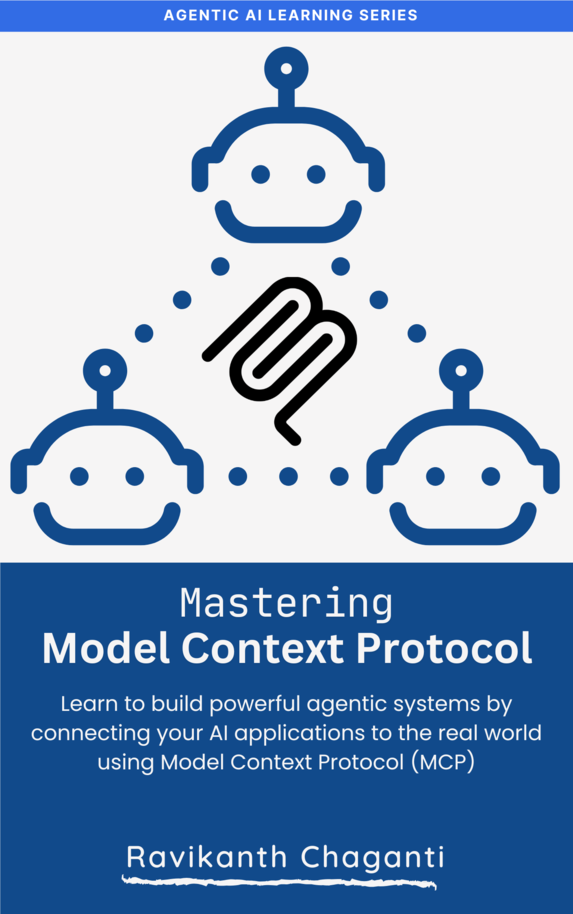
Mastering Model Context Protocol
Publisher: Leanpub
Standardization and standards are essential for any technology adoption at scale. Standards drive interoperability, enabling consistency in how a product, process, or technology should be designed, built, or used. This is achieved by developing a set of rules, guidelines, or specifications that one must adhere to. Without standards, the simple, seamless experience we take for granted would be replaced by constant frustration, chaos, and inefficiency. Imagine a world without TCP/IP, HTTP, and HTML that power the Internet today. Standards are woven into the fabric of our lives, often in ways we don't even notice. Ever noticed how you can work seamlessly on your laptop, a PC, and a phone without worrying about the keyboard layout? The QWERTY keyboards are the de facto standard. For technologies that empower humans and drive human progress, standardization is not just a wish but a critical requirement. Artificial Intelligence (AI) is one such technology that is changing how we work. The evolution of Large Language Models (LLMs) is enabling a wide range of capabilities across different industries and reducing the barrier to entry to develop AI applications. For creating AI applications, the OpenAI API format, for LLM interactions, became a de facto standard, making it easy to switch between LLM providers without worrying about constant code changes. This evolution from being just text completion machines to reasoning and thinking machines is accelerating the adoption of AI and has given rise to what we now call agentic AI. These AI agents, with an LLM as the brain, can observe and act autonomously to achieve a given goal. This requires access to external and real-time information. LLM providers have enabled techniques such as Retrieval Augmented Generation (RAG) and tool calling to provide the necessary context. This support, while it exists across different providers, is highly fragmented, with each provider choosing disparate ways of implementation, resulting in complex LLM and tool integrations and vendor lock-in. This is a big challenge for organizations and individuals hoping to address. To address this challenge, the brilliant people at Anthropic came up with a standard specification called the Model Context Protocol (MCP). MCP is an open standard and framework that standardizes how AI applications and agents provide context to LLMs. With many hyperscalers, enterprises, and developers rallying behind MCP, it has truly become an essential part of developing powerful AI applications and agents. However, adopting a standard that has not yet reached maturity has its pros and cons. While you get to review, use, and contribute to an evolving standard, the challenges around quality and security constrain adoption. This book provides you with the fundamentals you need to start using and building MCP support into your products. Security is a big aspect of building agentic AI systems, and you will learn about the current challenges and how to work around them. The MCP ecosystem is growing, and this book equips you with the knowledge to select the right tool you need for your AI application or agent. Tool and data access is a critical part of building agentic AI systems, and this book helps you master the art and science of providing the right context to the LLMs.
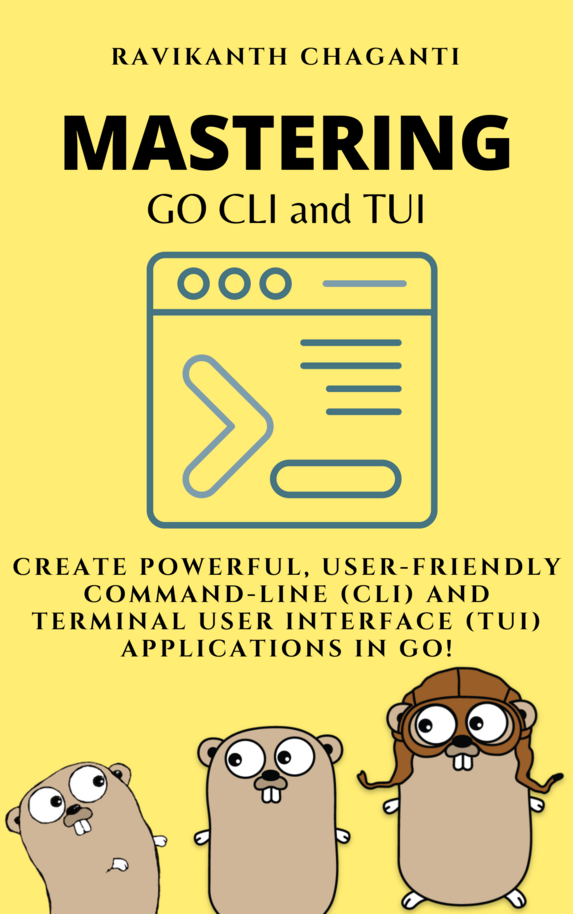
Mastering Go CLI and TUI
Publisher: Leanpub
Go is a fast, simple, and versatile programming language for building command-line and terminal user interfaces (CLI and TUI). Whether you want to create a tool for system administration, data analysis, network monitoring, or game development, Go can help you achieve your goals with ease and efficiency. In this book, you will learn how to master the art of CLI and TUI development in Go. You will start by writing a CLI application using the flag package in the standard library. Then you will dive into CLI and TUI libraries and frameworks, such as cobra, bubble tea, and more. You will learn how to create interactive menus, forms, tables, charts, widgets, and animations that run entirely in the terminal. You will learn how to create Go CLI in extending kubectl CLI. You will also learn to test, debug, and confidently deploy your CLI and TUI applications. By the end of this book, you will have the skills and knowledge to create powerful and user-friendly CLI and TUI applications in Go that can run on any platform and device.
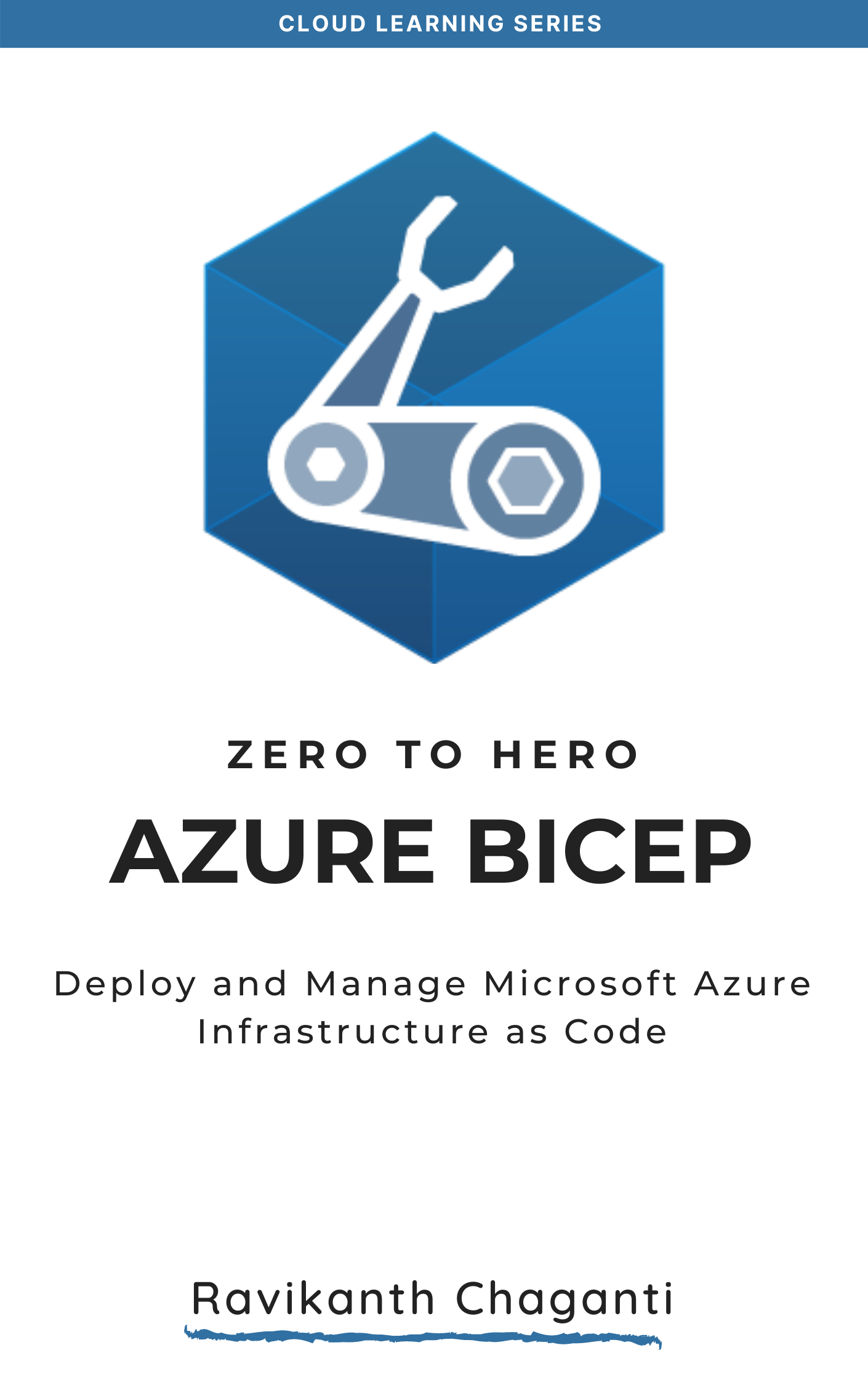
Azure Bicep - Zero to Hero
Publisher: Leanpub
Azure Resource Manager (ARM) brought in a new deployment model to Microsoft Azure. Unlike the classic deployment model, ARM looks at groups of resources and manages the life cycle of these resource groups from end to end. ARM simplified how you built and managed services on Azure. Along with the ARM deployment model, Microsoft also introduced a new way of provisioning Azure services through Azure Resource Manager templates. These templates are based on JSON data representation and provided a declarative way to define your Azure infrastructure. ARM templates offer a great way to automate infrastructure provisioning and integrate well into the infrastructure as code practices. However, using JSON data representation for ARM template language makes it too complex to read and write more extensive infrastructure definitions. For users getting started with Azure infrastructure deployments, this can be a nightmare. Enter Azure Bicep. Bicep language is a transparent abstraction over ARM template language. Azure Bicep templates traspile to ARM JSON templates. Bicep language is easy to learn and very simple to read and write. Being a transparent abstraction on top of ARM templates, Bicep supports the same resource types and properties. By building on top of resource specification API as the backend, Bicep enables day-zero support for any new resource introduced as an Azure service. This book focuses on deploying and managing Azure infrastructure with Bicep and covers everything that you need to know right from basics to the advanced usage of Bicep language to create complex Azure infrastructure configurations and implementing continuous pipelines for your Azure infrastructure configurations.
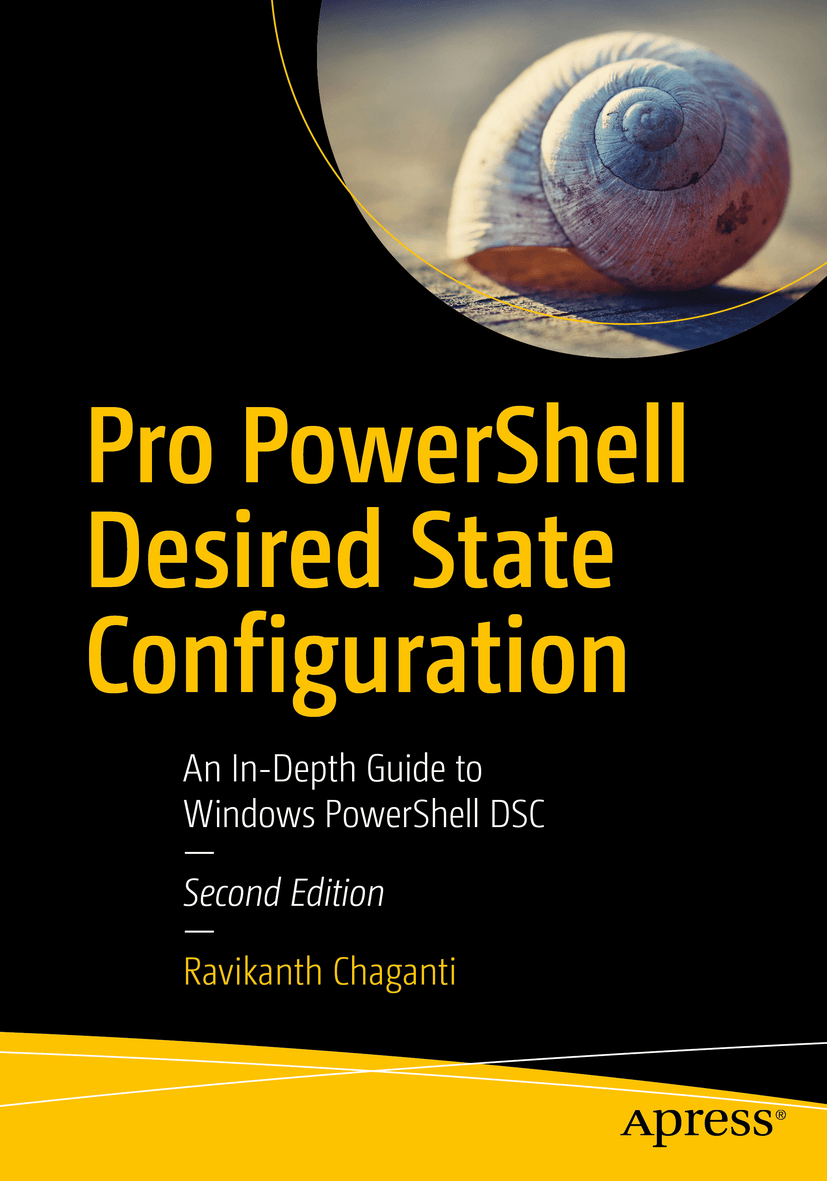
Pro PowerShell Desired State Configuration
Publisher: Apress
After the first book on PowerShell DSC and after release of PowerShell 5.1, DSC added many new features and exciting enhancements. A lot of cloud providers added support for DSC as well. It was not very easy to cover everything in a single book. It took me exactly 2 years to finish writing this book but it was worth it. Pro PowerShell Desired State Configuration significantly expands previous edition, bringing a complete in-depth reference for applying this evolving technology in your day-to-day work involving PowerShell DSC.

Windows PowerShell Desired State Configuration Revealed
Publisher: Apress
When PowerShell 4.0 was first released, I had immediately jumped onto PowerShell Desired State Configuration (DSC) feature and blogged about it quite a bit. Just when I thought I should turn that into an ebook, Apress approached for publishing a book around PowerShell DSC and I immediately said yes. It was fun writing this and like my previous books, this was an instant hit since there was not even proper documentation around PowerShell DSC at that time.
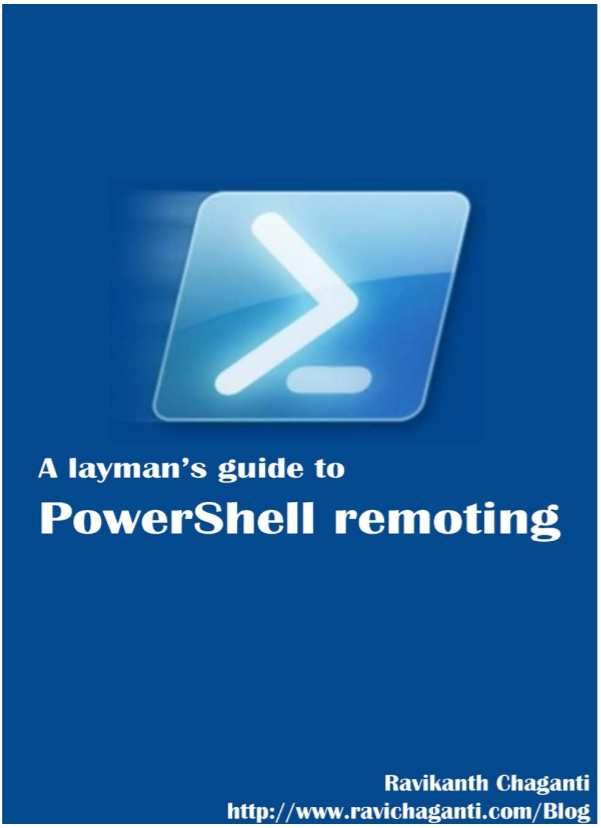
Layman’s Guide to PowerShell Remoting 2.0
Publisher: Self-Published
This ebook is more like a beginner guide that will take you from zero to hero around the concepts of PowerShell remoting feature in version 2.0. This was my first attempt at writing anything more than a couple of pages. And, IMHO, this ebook (or rather just a PDF) was very well received and was the most referenced during the days of PowerShell 2.0 and 3.0. I really enjoyed writing it since I wrote it the way I prefer to read the remoting concepts and that clicked with many readers. I started it as a blog post series and converted that into a consolidated PDF format.
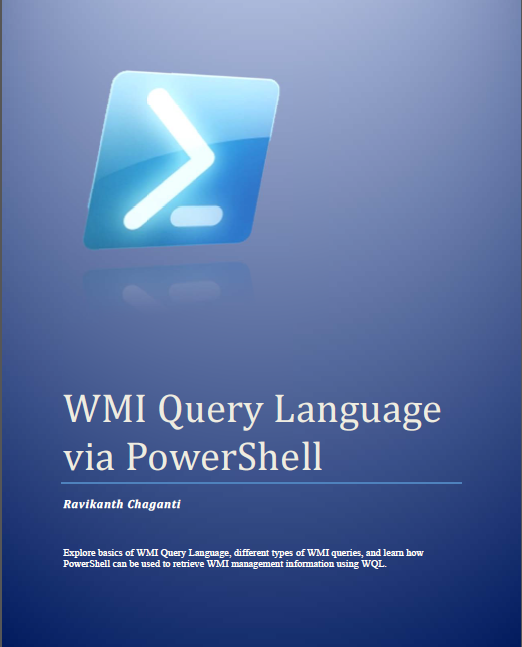
WMI Query Language via PowerShell
Publisher: Self-Published
This ebook helps you explore basics of WMI Query Language, different types of WMI queries, and learn how PowerShell can be used to retrieve WMI management information using WQL. This is still the most popular WMI content out there referenced by many administrators and security (red and blue teams) professionals.